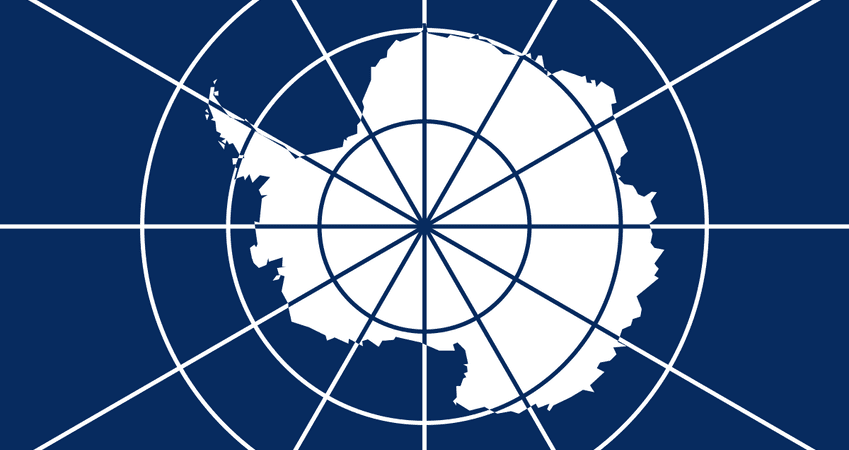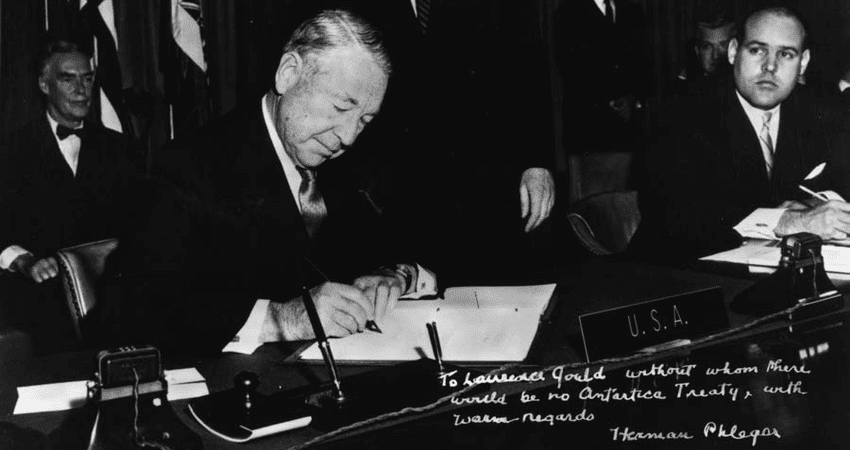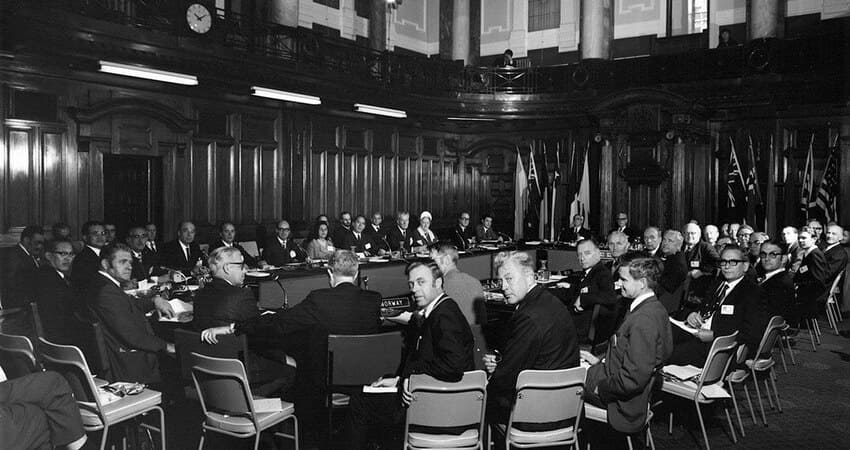Who Owns Antarctica?
7 December, 2022

Everyone and no one. Those four words describe perhaps the simplest way of answering questions about the sovereignty of the Seventh Continent. And, the description has been relatively accurate since 1961 when the Antarctic Treaty, signed two years earlier, came into force.
Claims of ownership by Spain of Terra Australis Incognita – lands south of South American and Africa – go back to the 15th and 16th centuries. But it wasn’t until the 18th and 19th centuries, when hardy navigators first set eyes on the continent and ice sheet surrounding it, that more serious stakes were put forth. Spain’s original claims became those of Argentina and Chile, and five other nations jumped into the picture: Norway, France, Britain and the latter’s major colonies of the time, Australia and New Zealand. Because any type of border was practically impossible to enforce, many of the territorial claims overlapped.
As the world moved into the 20th century and technology and governmental resources allowed for more activities in Antarctica, national interests became more pronounced. Norway pushed back against British plans to tax Norwegian whaling ventures, claiming certain areas as sovereign territory. Germany, the United States, Russia and Chile disputed Norway’s declaration.
Things further heated up in the 1940s, when disputes between Argentina and Britain became contentious. Much to Argentina’s annoyance, Britain raised its flag in several spots on the Antarctic Peninsula prior to WWII, saying the establishment of bases was necessary to keep an eye on Nazi Germany, which was reported to be using remote Antarctic islands as rendezvous points for its U-boats and other nefarious activities. Britain was also concerned that the United States would be jockeying for possible territorial claims post war. Indeed, the U.S. was interested, and mounted “Operation Highjump” in 1946-47 to ostensibly train personnel and test equipment in cold, icy conditions. To the world, The U.S. not surprisingly denied any intentions that it might be considering a sovereign claim.

Good sense and diplomacy came into play in the 1950s, and was further spurred on by the International Geophysical Year of 1957-58. Sixty-six nations participated in a series of conferences and a special committee for Antarctic research (SCAR) was established. While this forum for the exchange of scientific papers and studies was originally intended to be short-lived, underlying concerns about potentially new sovereign “land grabs” and the danger of the Cold War spreading to the continent provided continued support for SCAR.
The IGY of 1957-58 led U.S. President Dwight D. Eisenhower to convene an Antarctic Conference, with the goal of establishing a treaty. The result was the signing of the Antarctic Treaty on December 1, 1959. Along with its notable and very worthy objectives of furthering scientific research and peaceful use of the continent, the treaty stands out as the first arms control agreement that occurred within the timeframe of the Cold War.
The Antarctic Treaty System – which suspends any claims of sovereignty for 50 years from the date of its signing – remains a robust and effective management system for the continent. There are currently 54 signatories to the treaty, 29 of which are consultative parties. These are the nations that have taken a lead in providing resources and scientific examination on all aspects of Antarctica, from geological research to wildlife conservation and climate inquiries.

The ATS is certainly not perfect, but its ability to be flexible and open to new ideas, such as tourism, has developed into a system that works. And it has kept Antarctica a place that belongs to no one … and to everyone.
Photo sources: https://www.asoc.org/ https://www.researchgate.net/figure/Signature-of-the-Antarctic-Treaty-on-1-December-1959-in-Washingt...